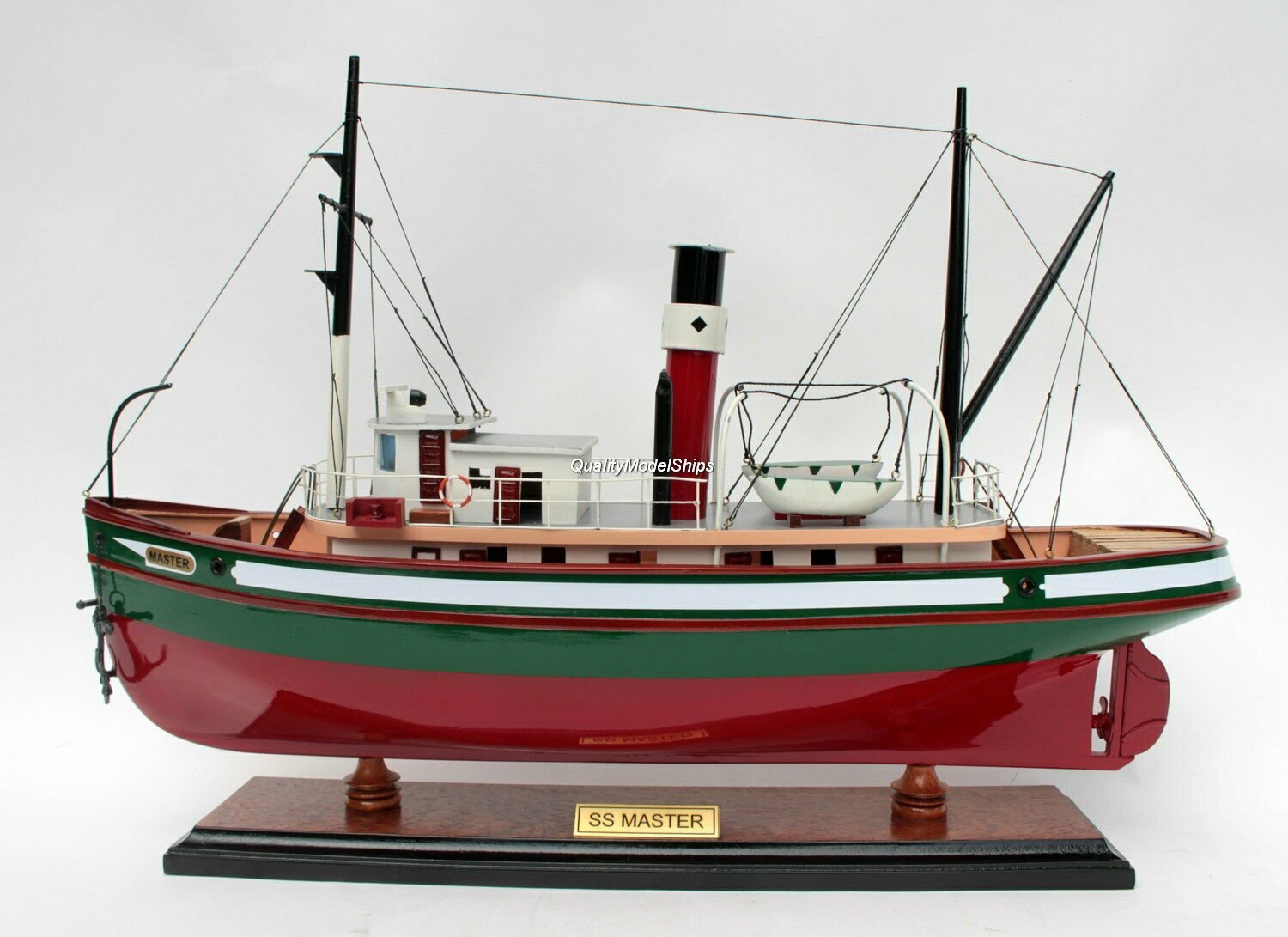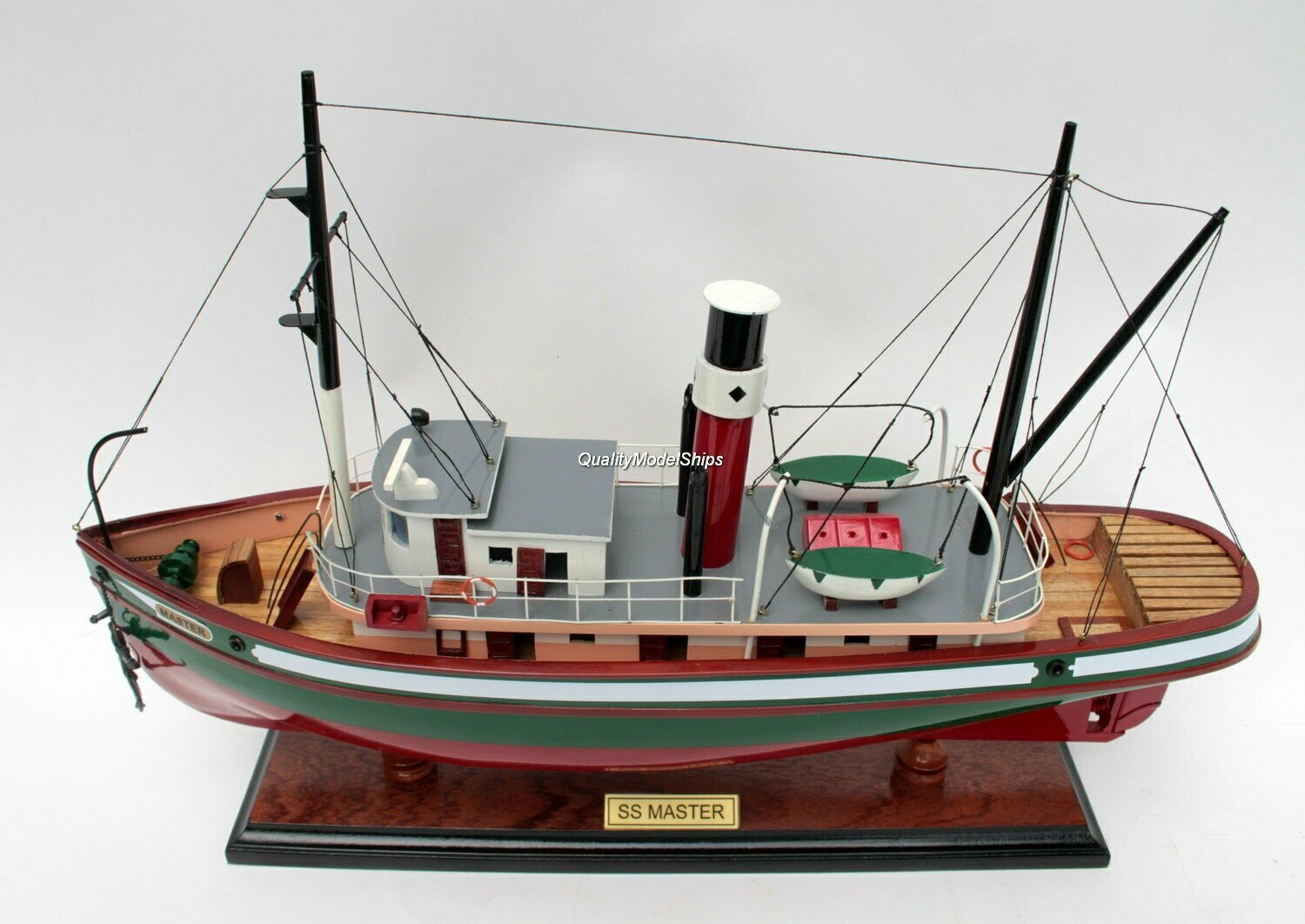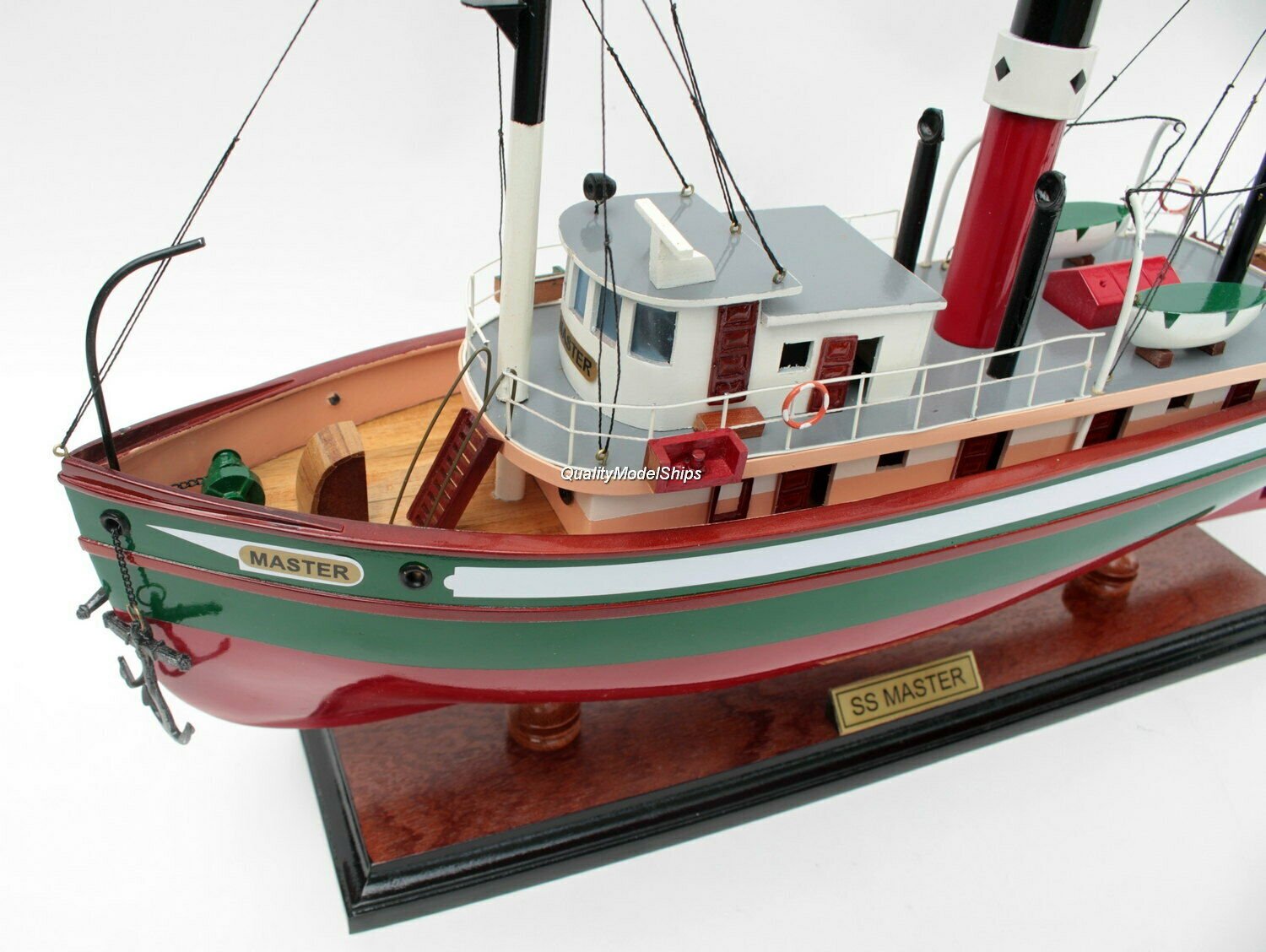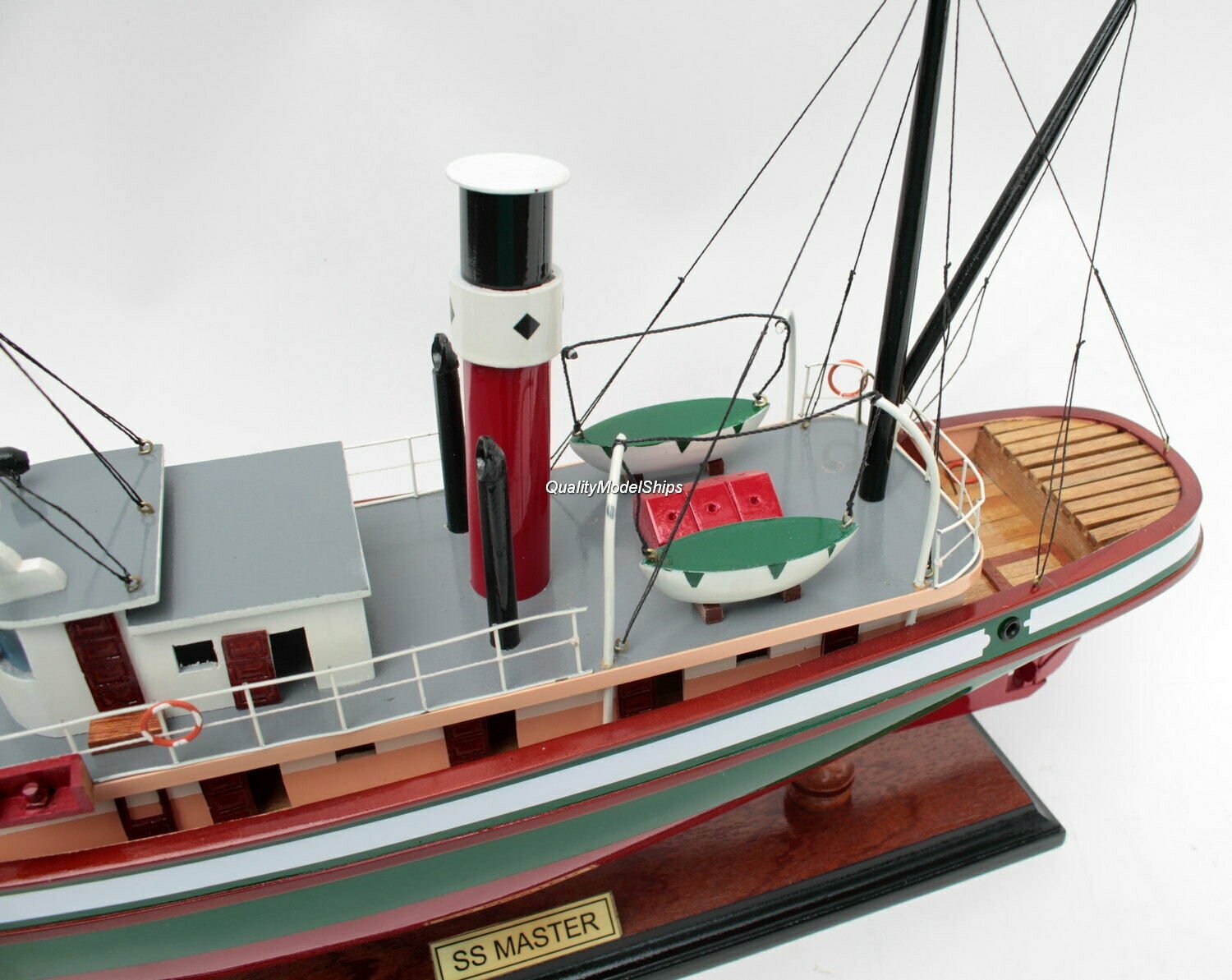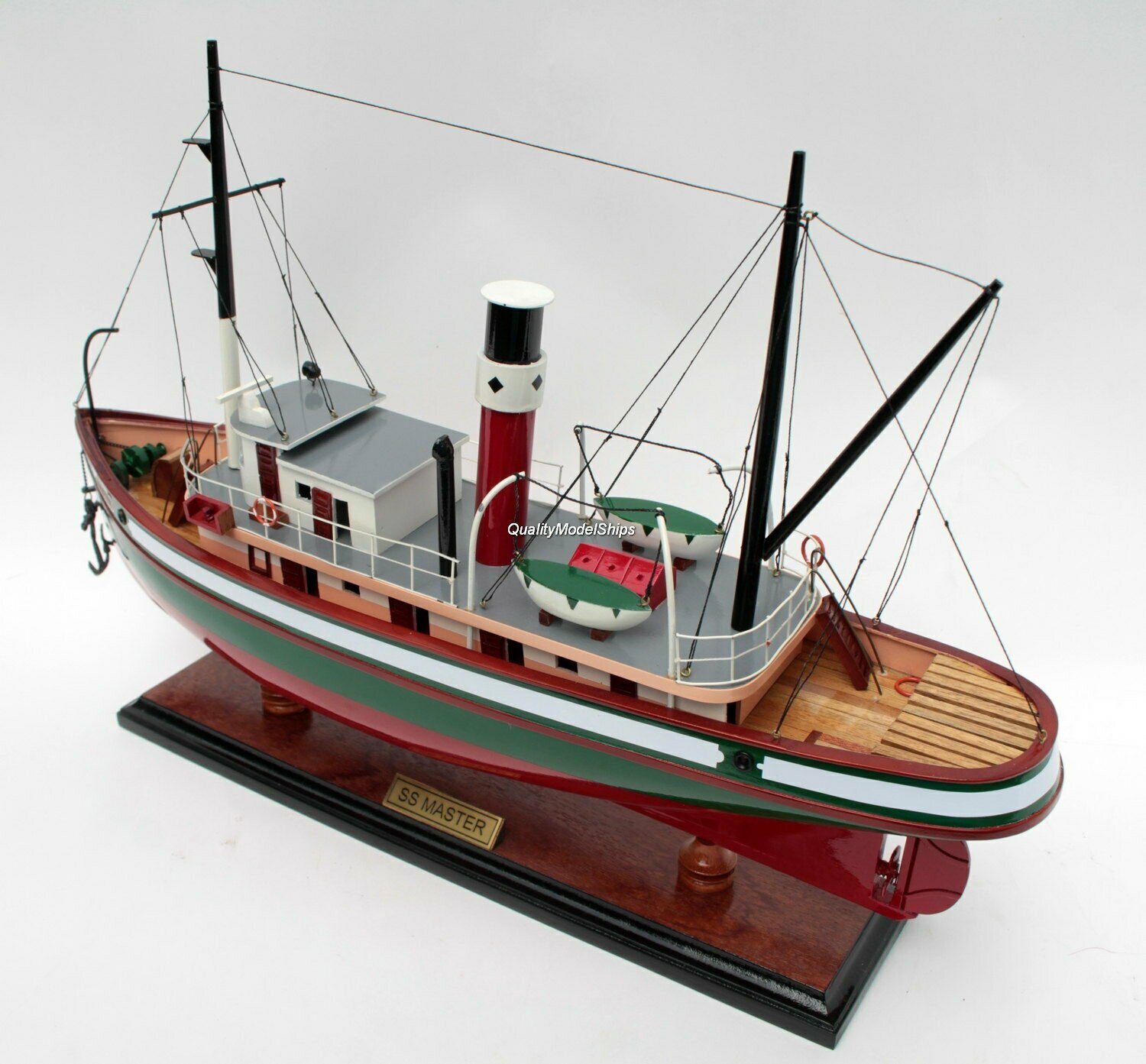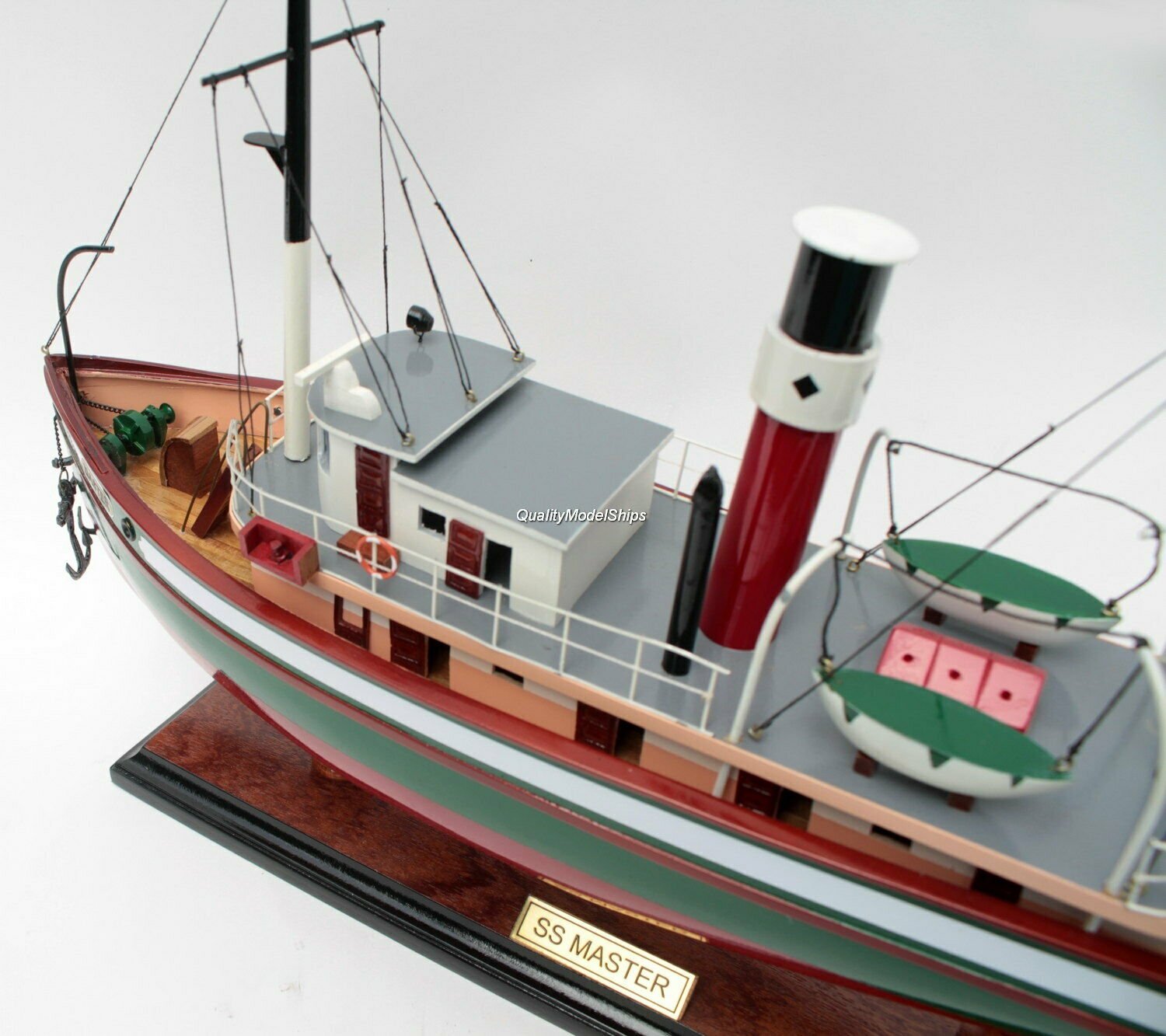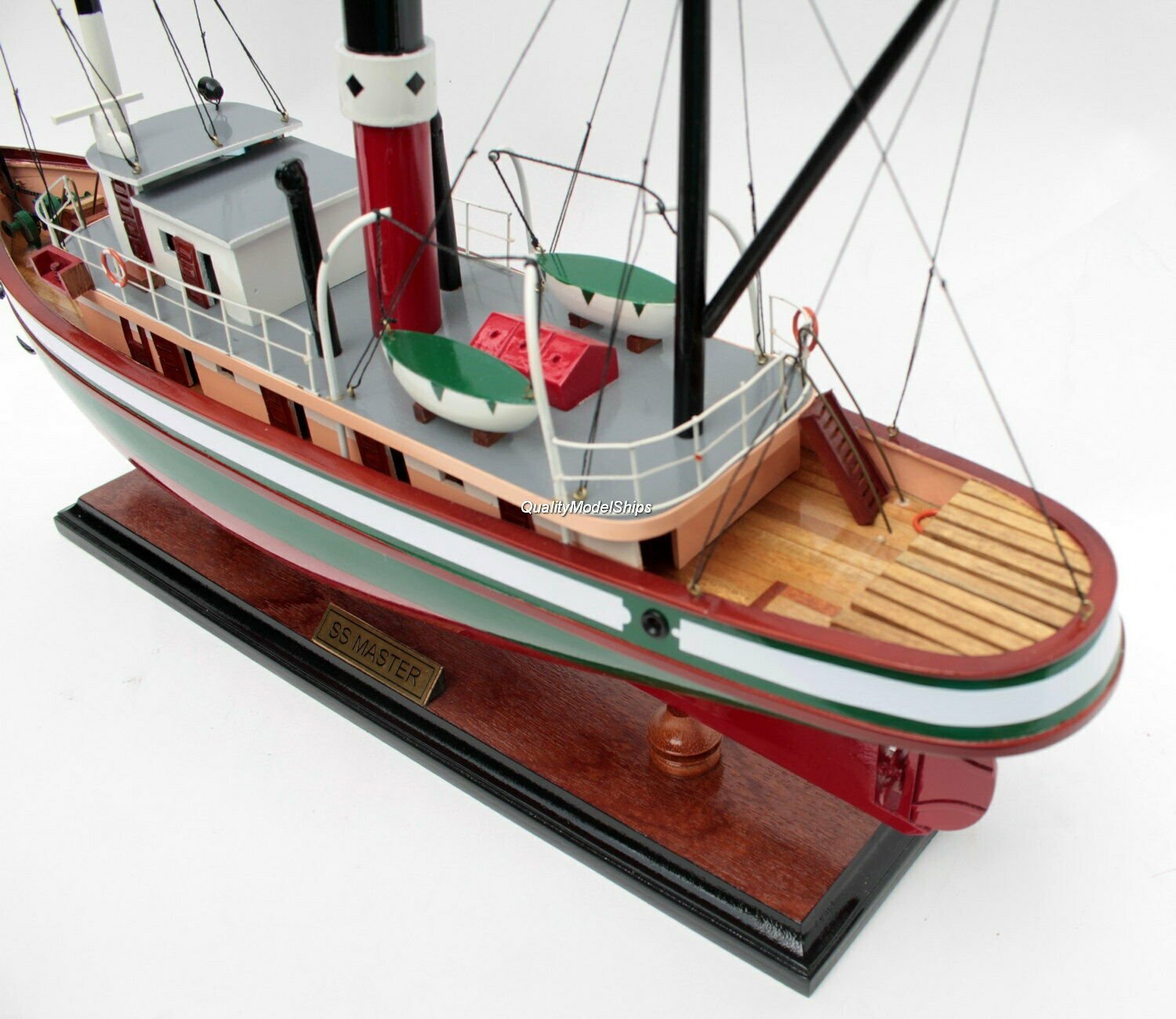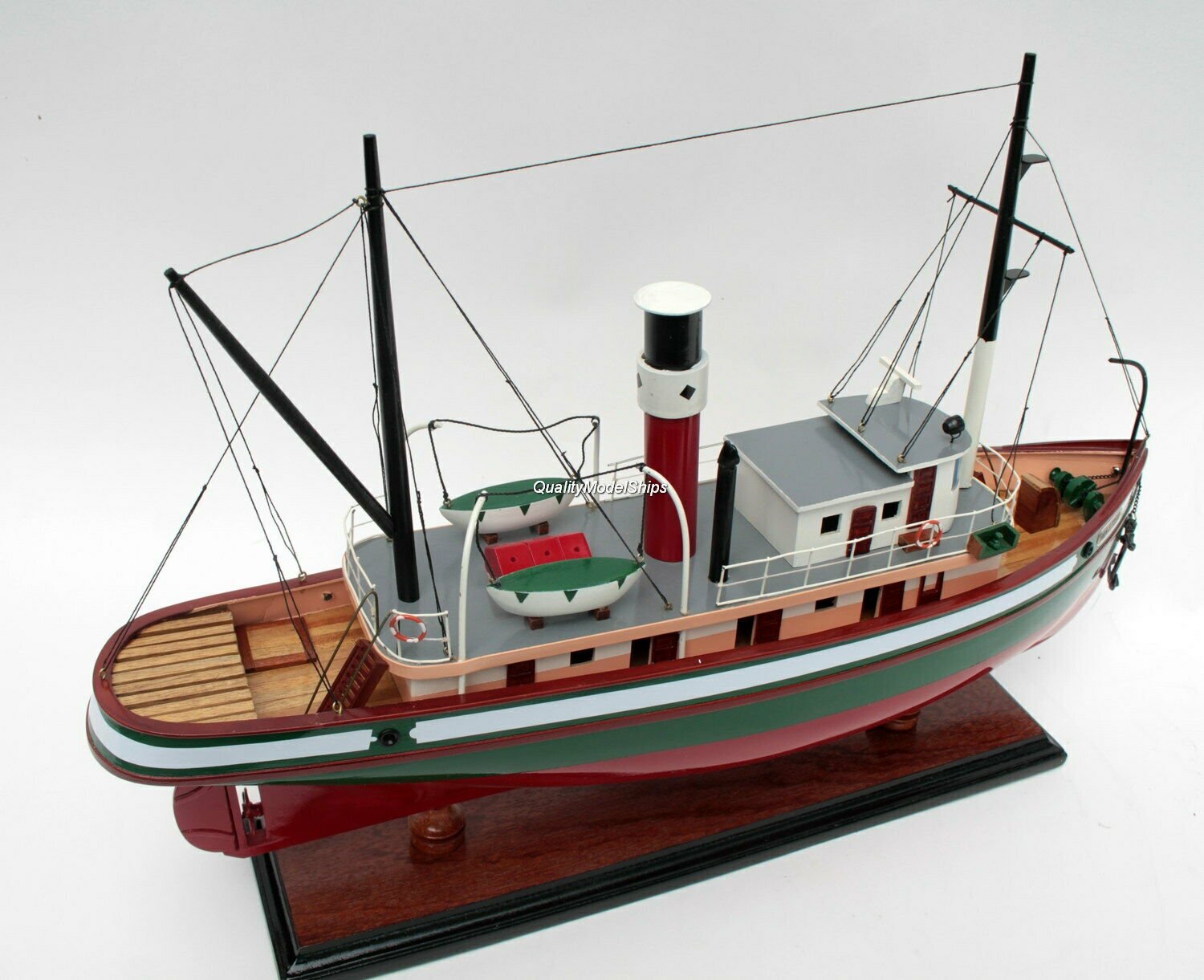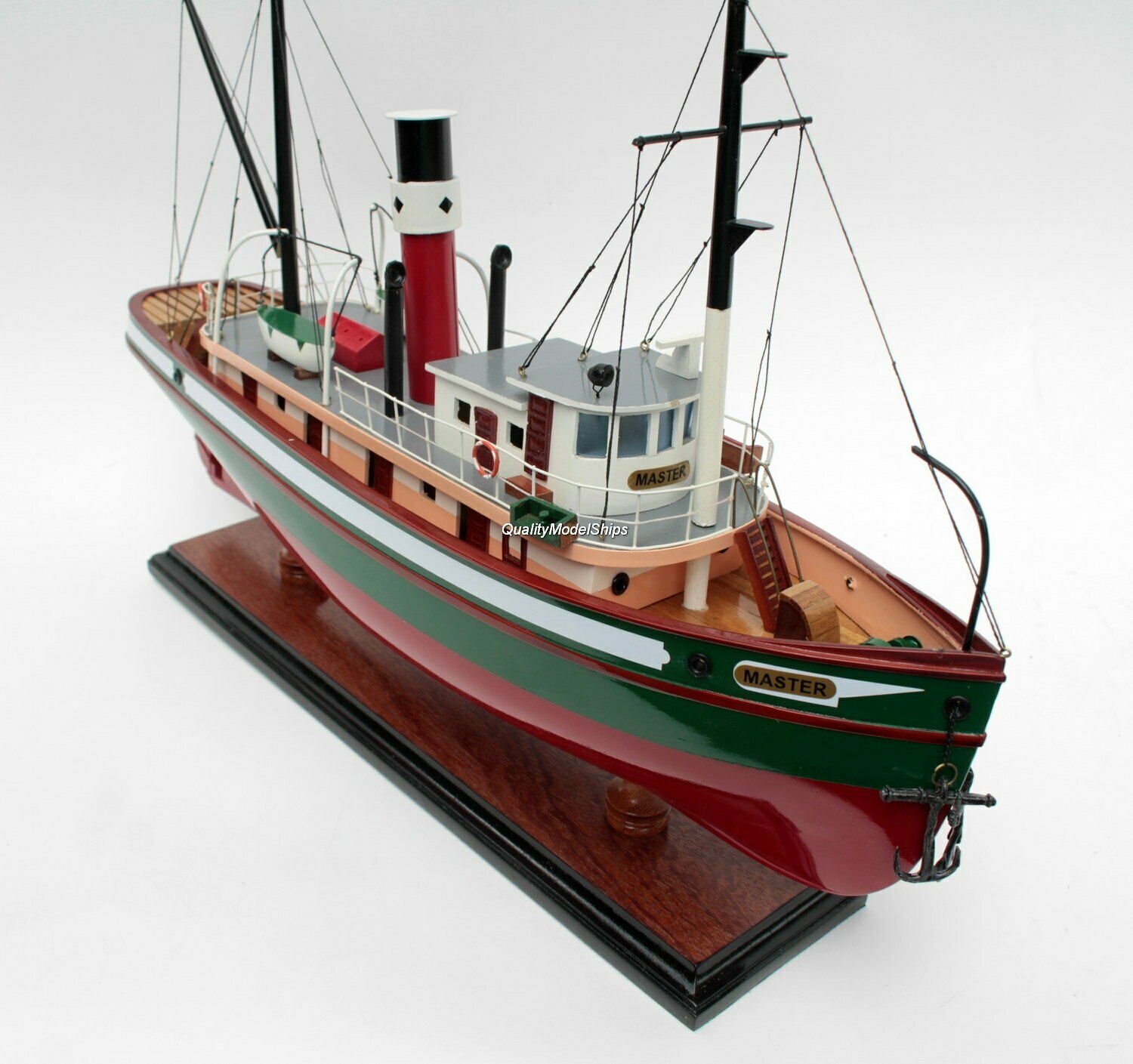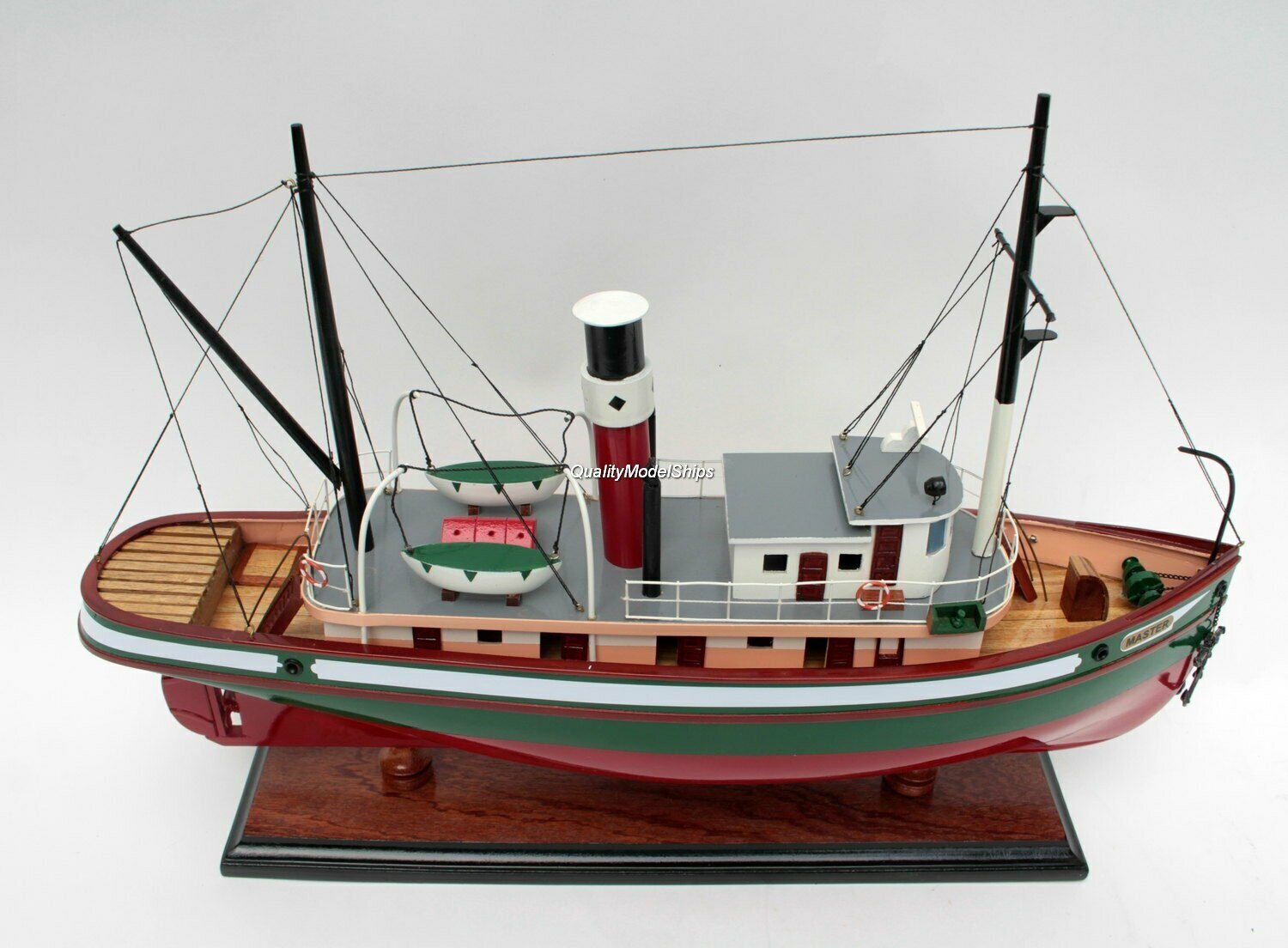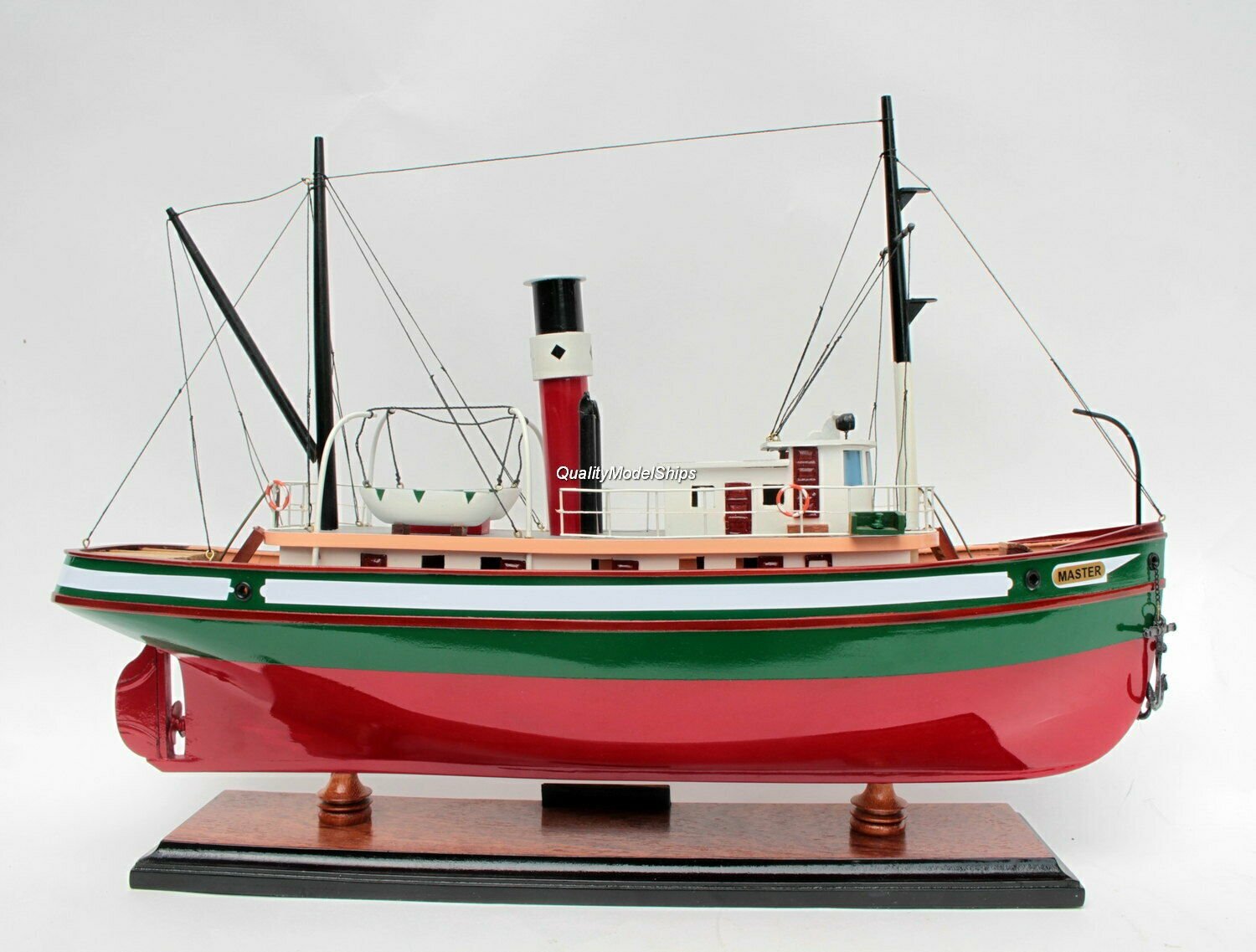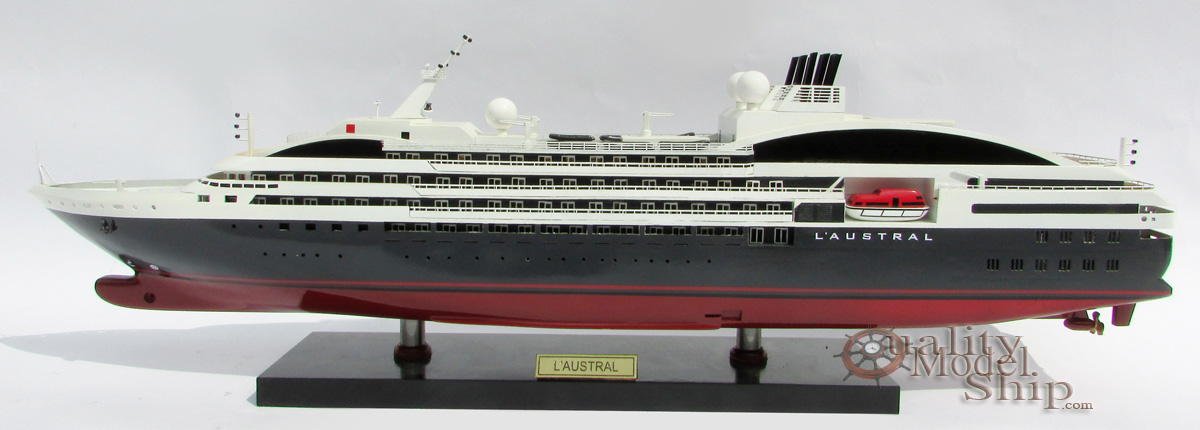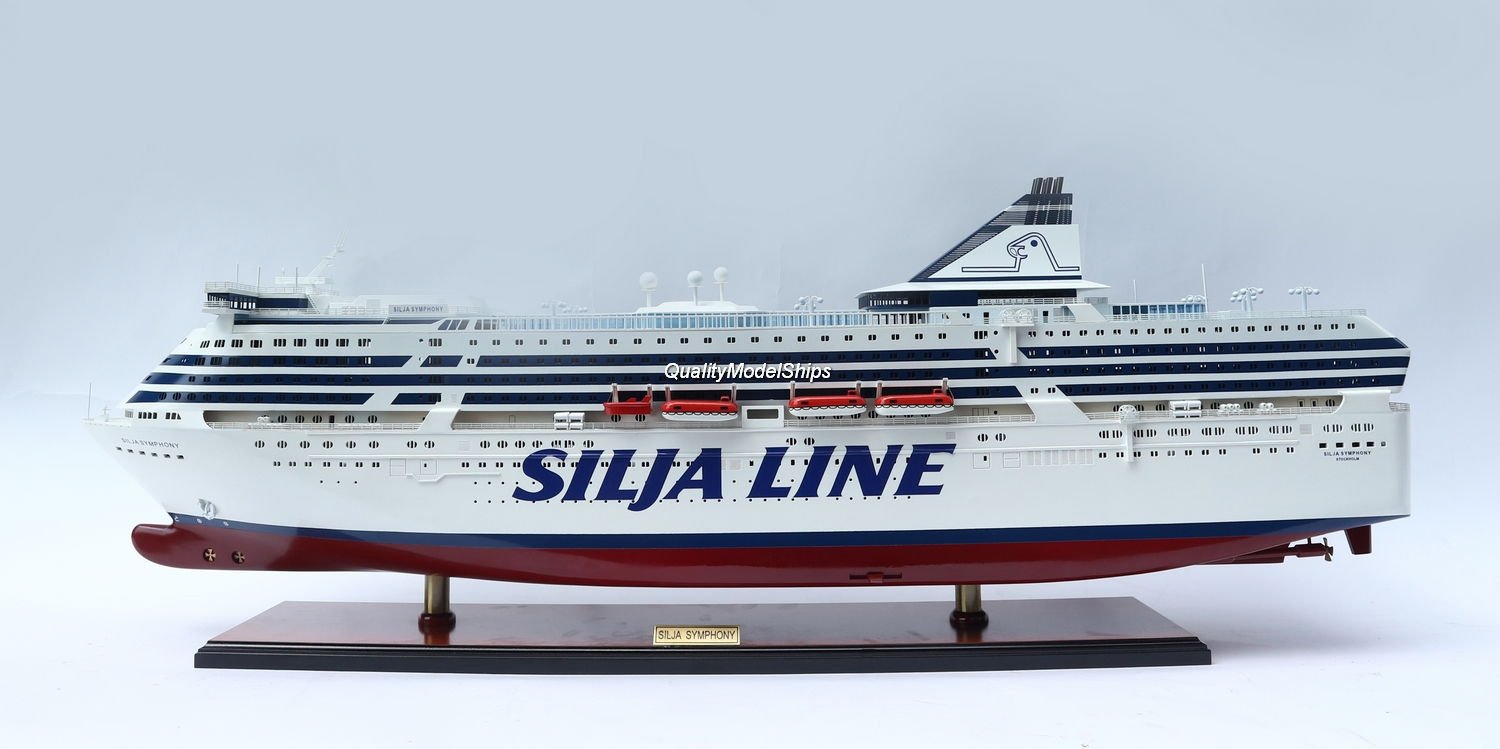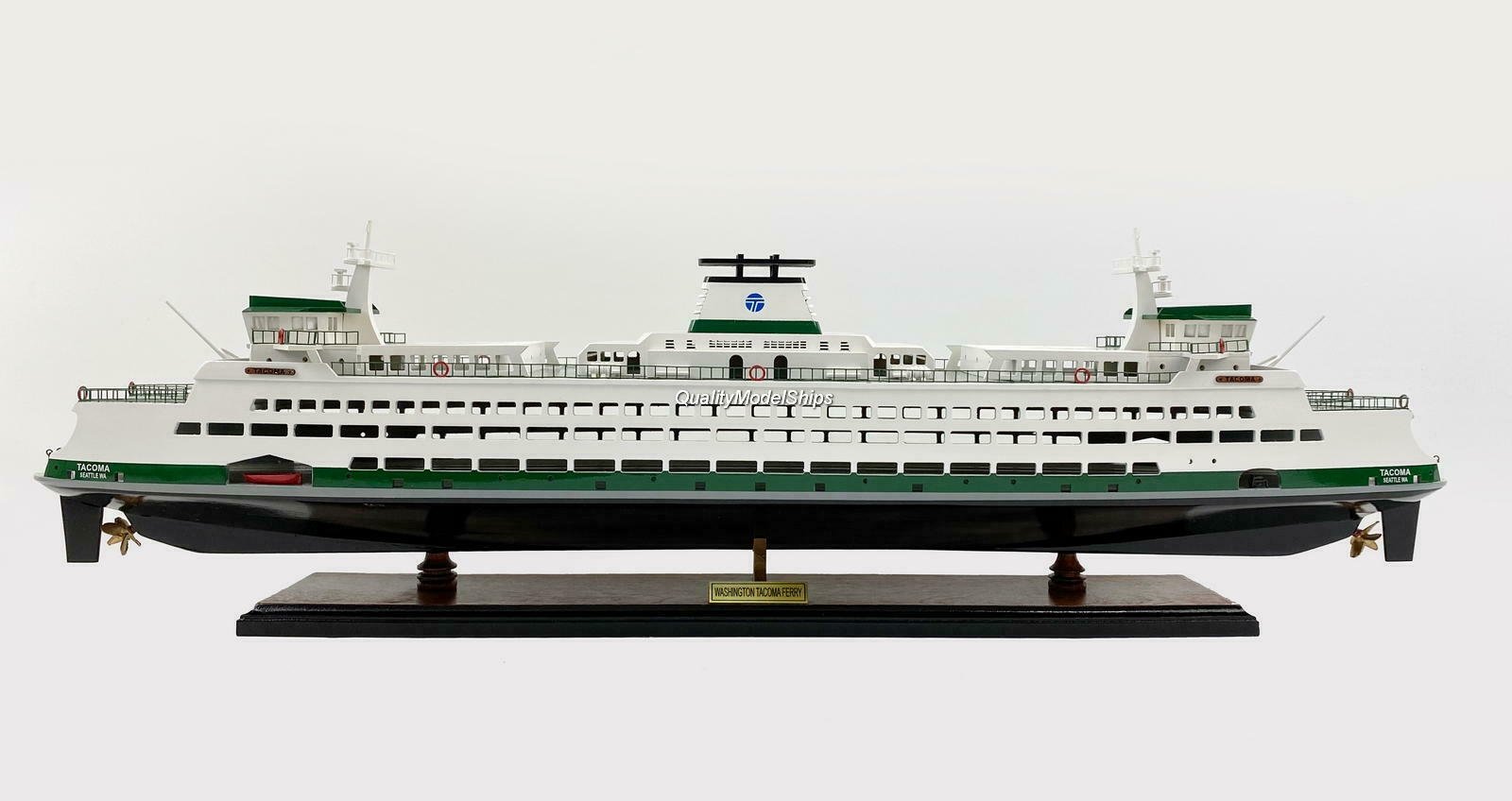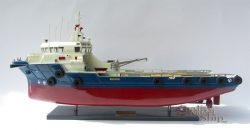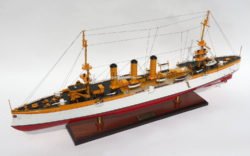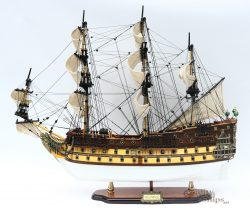| Content | • The model is 100% scratch built with planks on frame construction method from the drawings.
• The hull is made of wood and painted. Our model is built fully assembled and ready for display.
• Model comes with a display base and a brass name plate as shown photos.
• Specifications: 19.68L x 5.51W x 13.38H (inch) or 50L x 14W x 34H (cm)
• Brand new product. Buyer from Alaska, Puerto Rico, Hawaii or overseas, please contact us for extra shipping cost.
• Item ship from Houston Texas by Standard shipping USPS/ UPS/ FedEx ground
• International buyer pays any duty/ import tax if any.
Return/ Exchange Policy
• For some reasons if you wish to return the item, please consider not to open the item out of the wooden crate or open the item out of the styrofoam. You can open the carton box, lift up the whole wooden crate and check the models that are packed in wooden crate. For the items are packed in solid styrofoam, you can open the carton box, lift up the top part (styrofoam lid) and check the model. Please do not cut any strips or take the model out of the wooden crate or out of the styrofoam. It is very risky of damages to the item when you return if you open or remove the item out of the wooden crate or the styrofoam. We only accept and refund in full when the model return in good shape.
• Returned or exchanged products must be in brand-new, original condition, and have all original packaging, materials, and accessories .
• Buyer pays return shipping. | • The model is 100% scratch built with planks on frame construction method from the drawings. The hull is made of wood and painted with colors.
• This model is not a kit and ready for display. Model comes with a display base and a brass name plate as shown photos.
• Specifications: 27.95L x 3.36W x 9.05H (inch) or 71L x 8.5W x 23H (cm)
• Buyer from Alaska, Puerto Rico, Hawaii or overseas, please contact us for shipping cost.
• International buyer pays any duty/ import tax.
Return/ Exchange Policy
• For some reasons if you wish to return the item, please consider not to open the item out of the wooden crate or open the item out of the styrofoam. You can open the carton box, lift up the whole wooden crate and check the models that are packed in wooden crate. For the items are packed in solid styrofoam, you can open the carton box, lift up the top part (styrofoam lid) and check the model. Please do not cut any strips or take the model out of the wooden crate or out of the styrofoam. It is very risky of damages to the item when you return if you open or remove the item out of the wooden crate or the styrofoam. We only accept and refund in full when the model return in good shape.
• Returned or exchanged products must be in brand-new, original condition, and have all original packaging, materials, and accessories .
• Buyer pays return shipping.
• 15% restocking fee might apply.
|
- The model is 100% scratch built with planks on frame construction method from the drawings.
- The hull is made of wood and painted. This model is not a kit and ready for display.
- Model comes with a display base and a brass name plate as shown photos.
- Specifications: 40.15"L x 7.87"W x 14.56"H or 102L x 20W x 37H (cm)
- Brand new product. Buyer from Alaska, Puerto Rico or Hawaii, please contact us for extra shipping cost.
- Item ship from Houston Texas by Standard shipping USPS/ UPS/ FedEx ground International buyer pays any duty/ import tax if any.
Return/ Exchange Policy
• For some reasons if you wish to return the item, please consider not to open the item out of the wooden crate or open the item out of the styrofoam. You can open the carton box, lift up the whole wooden crate and check the models that are packed in wooden crate. For the items are packed in solid styrofoam, you can open the carton box, lift up the top part (styrofoam lid) and check the model. Please do not cut any strips or take the model out of the wooden crate or out of the styrofoam. It is very risky of damages to the item when you return if you open or remove the item out of the wooden crate or the styrofoam. We only accept and refund in full when the model return in good shape.
• Returned or exchanged products must be in brand-new, original condition, and have all original packaging, materials, and accessories .
• Buyer pays return shipping.
• 15% restocking fee might apply.
| • The model is 100% scratch built with planks on frame construction method from the drawings.
• The hull is made of wood and painted. This model is not a kit but ready for display.
• Model comes with a display base and a brass name plate as shown photos.
• Specifications: 36.61L x 7.08W x 10.23H (inch) or 93L x 18W x 26H (cm)Brand new product.
• Buyer from Alaska, Puerto Rico or Hawaii, please contact us for extra shipping cost.
• Item ship from Houston Texas by Standard shipping USPS/ UPS/ FedEx ground
• International buyer pays any duty/ import tax if any.
History
The MV Tacoma is a Jumbo Mark II Class ferry operated by Washington State Ferries. Launched in 1997, it was the first in its class in the Washington State Ferries fleet. Since delivery, the Tacoma has almost exclusively been assigned to the Seattle-Bainbridge Island route.
The Tacoma and its sister ship, the MV Wenatchee, suffered from excessive vibration during their early period of operation, until it was repaired during routine maintenance in 1999. The issue was addressed in the later Jumbo Mark II ferry, the MV Puyallup, before it launched.
Return/ Exchange Policy
• For some reasons if you wish to return the item, please consider not to open the item out of the wooden crate or open the item out of the styrofoam. You can open the carton box, lift up the whole wooden crate and check the models that are packed in wooden crate. For the items are packed in solid styrofoam, you can open the carton box, lift up the top part (styrofoam lid) and check the model. Please do not cut any strips or take the model out of the wooden crate or out of the styrofoam. It is very risky of damages to the item when you return if you open or remove the item out of the wooden crate or the styrofoam. We only accept and refund in full when the model return in good shape.
• Returned or exchanged products must be in brand-new, original condition, and have all original packaging, materials, and accessories .
• Buyer pays return shipping. | • The model is 100% scratch built with planks on frame construction method from the drawings.
• The hull is made of wood and painted as the color of the real ship. Our model is built fully assembled and ready for display. The containers on the model might be vary in colors and container brands due to our master craftsmen are random install the containers on the model.
• Model comes with a display base and a brass name plate as shown photos.
• Specifications: 40.55 L x 5.90W x 9.44H (inch) or 103L x 15W x 24H (cm)
• Brand new product. Buyer from Alaska, Puerto Rico, Hawaii or overseas, please contact us for shipping cost.
• Item ship from Houston Texas by Standard shipping USPS/ UPS/ FedEx ground
• International buyer pays any duty/ import tax if any.
Return/ Exchange Policy
• For some reasons if you wish to return the item, please consider not to open the item out of the wooden crate or open the item out of the styrofoam. You can open the carton box, lift up the whole wooden crate and check the models that are packed in wooden crate. For the items are packed in solid styrofoam, you can open the carton box, lift up the top part (styrofoam lid) and check the model. Please do not cut any strips or take the model out of the wooden crate or out of the styrofoam. It is very risky of damages to the item when you return if you open or remove the item out of the wooden crate or the styrofoam. We only accept and refund in full when the model return in good shape.
• Returned or exchanged products must be in brand-new, original condition, and have all original packaging, materials, and accessories .
• Buyer pays return shipping.
• 15% restocking fee might apply.
| • The model is 100% scratch built with planks-on-frame construction
method. The hull is made of combination exotic wood. Some parts are painted with colors. The masts are full-rigged with curl sails. It takes hundreds of hours to finish this model by skillful master craftsmen.
• The ornaments such as cannons, anchors, lamps are metal.
• Model is fully assembled and ready to display. The base included with the brass nameplate as show pictures.
• Dimensions approximate 35.43L x 10.23W x 27.16H (inch) or 90L x 26W x 69H (cm)
• Buyer from Alaska, Puerto Rico, Hawaii or overseas, please contact us for shipping cost.
HISTORY
HMS Prince (1670)
HMS Prince (sometimes also referred to as Royal Prince) was a 100-gun first rate ship of the line of the Royal Navy, built by Phineas Pett II at Deptford Dockyard and launched in 1670. A contemporary shipyard model (today at the Science Museum London) and a drawing by Willem van de Velde the Elder (today in the Rijksmuseum Amsterdam) give a good impression how she looked. Especially her stern was extensively decorated with gilded carvings.
During the Third Anglo-Dutch War she served as a flagship of the later king James II, then Duke of York and Lord High Admiral. During the Battle of Solebay (1672) she was in the centre of the English fleet that was attacked by the Dutch centre led by Admiral Michiel de Ruyter. The Prince was heavily damaged by De Ruyter's flagship De Zeven Provinciën in a two hours' duel and Captain of the Fleet Sir John Cox was killed on board. The Duke of York was forced to shift his flag to HMS St Michael. The Prince's second captain, John Narborough, however conducted himself with such conspicuous valour that he won special approbation and was knighted shortly afterwards.
HMS Prince was rebuilt by Robert Lee at Chatham Dockyard in 1692, and renamed at the same time as HMS Royal William. During the War of the Grand Alliance the ship saw action at the Battle of Barfleur of 19 May 1692. The Prince belonged to the red squadron and carried the flag of Rear Admiral of the Red Sir Cloudesley Shovell. She was the first ship to break the French line during the battle.
Later she was rebuilt for a second time by John Naish at Portsmouth Dockyard from 1714, relaunching on 3 September 1719. She was laid up after her re-launch and saw no service at all until she was reduced to an 84-gun Second rate ship in 1756. One year later, she was part of an unsuccessful expedition against Rochefort led by Admiral Sir Edward Hawke. Her squadron, under Vice-Admiral Charles Knowles, attacked the Île-d'Aix and forced her garrison to surrender. In 1758 she participated in Boscawen's and Wolfe's attack on the French Fortress of Louisbourg (Nova Scotia) and an indecisive skirmish with a French squadron. The following year the Royal William returned to Canada under the command of Captain Hugh Pigot to join the attack on Quebec. After the Battle of the Plains of Abraham and the capture of Quebec she sailed back to England with the body of General Wolfe. In 1760 the Royal William was Boscawen's flagship when he took command of the fleet in Quiberon Bay. However, after a severe gale he was forced to return and shift his flag to the Namur. During the expedition against Belle Île of 1761 she was detached with several other ships to cruise off Brest and prevent a French counter-attack from there.
The Seven Years' War seems to be the last time that the Royal William played an active role. She was broken up in 1813.
|
